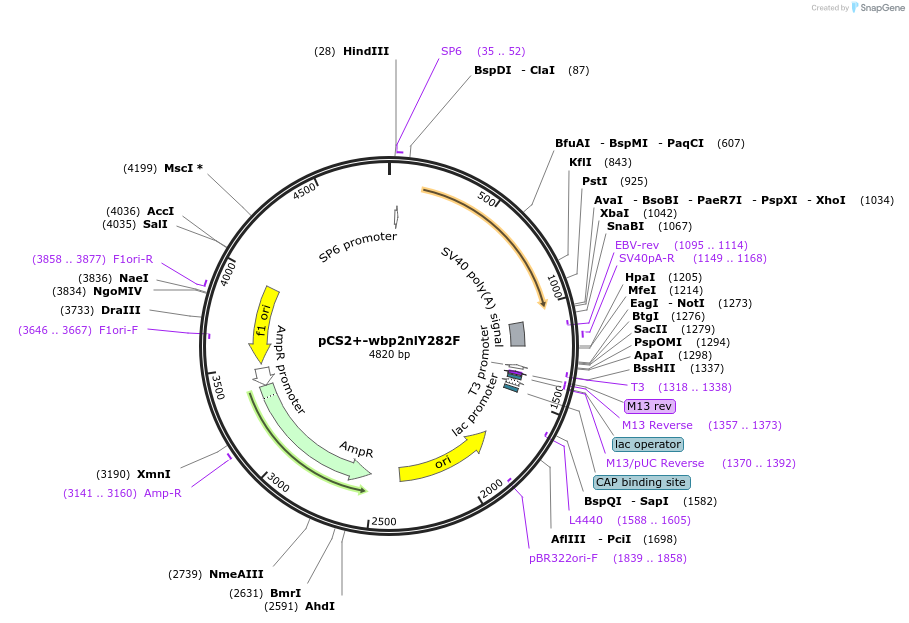pCS2+-wbp2nlY282F
(Plasmid
#172468)
-
Purposeexpresses protein with one aa substitution to affect potential phosphorylation in WW-interaction domain
-
Depositing Lab
-
Sequence Information
Ordering
| Item | Catalog # | Description | Quantity | Price (USD) | |
|---|---|---|---|---|---|
| Plasmid | 172468 | Standard format: Plasmid sent in bacteria as agar stab | 1 | $89 | |
Backbone
-
Vector backbonepCS2+
- Backbone size w/o insert (bp) 4100
- Total vector size (bp) 5046
-
Vector typeXenopus Expression
Growth in Bacteria
-
Bacterial Resistance(s)Ampicillin, 100 μg/mL
-
Growth Temperature37°C
-
Growth Strain(s)DH5alpha
-
Copy numberUnknown
Gene/Insert
-
Gene/Insert namewbp2nlY282F
-
SpeciesX. laevis (frog)
-
Mutationchanged Tyrosine at aa282 to Phenylalanine
- Promoter SP6
-
Tag
/ Fusion Protein
- none
Cloning Information
- Cloning method Restriction Enzyme
- 5′ cloning site Cla1 (not destroyed)
- 3′ cloning site Xho1 (not destroyed)
- 5′ sequencing primer SP6
- 3′ sequencing primer M13
- (Common Sequencing Primers)
Terms and Licenses
-
Academic/Nonprofit Terms
-
Industry Terms
- Not Available to Industry
Trademarks:
- Zeocin® is an InvivoGen trademark.
Depositor Comments
we cloned this plasmid
Please note: Plasmid contains a 199bp deletion in the CMV IE94 promoter compared to the PCS2+ backbone sequence. It is not known how this deletion affects plasmid function.
These plasmids were created by your colleagues. Please acknowledge the Principal Investigator, cite the article in which the plasmids were described, and include Addgene in the Materials and Methods of your future publications.
-
For your Materials & Methods section:
pCS2+-wbp2nlY282F was a gift from Sally Moody (Addgene plasmid # 172468 ; http://n2t.net/addgene:172468 ; RRID:Addgene_172468) -
For your References section:
Wbp2nl has a developmental role in establishing neural and non-neural ectodermal fates. Marchak A, Grant PA, Neilson KM, Datta Majumdar H, Yaklichkin S, Johnson D, Moody SA. Dev Biol. 2017 Sep 1;429(1):213-224. doi: 10.1016/j.ydbio.2017.06.025. Epub 2017 Jun 27. 10.1016/j.ydbio.2017.06.025 PubMed 28663133







